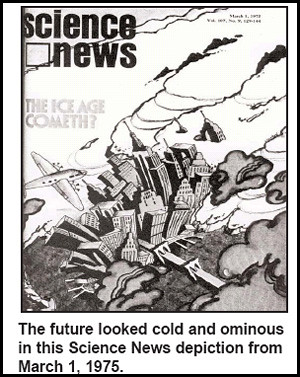Samtidigt som Svensmarks teori bekräftats har ett forskningsresultat jag tidigare nämnt, t ex här, där solforskare visar att solaktivitet (via kosmisk strålnings påverkan på moln) står för cirka 40 procent av temperaturförändring även visats av en fysiker och f d ordförande i indiska rymdstyrelsen, professor U R Rao.
Ur The Hindu:
[...] U.R. Rao, has calculated that cosmic rays — which, unlike carbon emissions, cannot be controlled by human activity — have a much larger impact on climate change than The Intergovernmental Panel on Climate Change (IPCC) claims.
In fact, the contribution of decreasing cosmic ray activity to climate change is almost 40 per cent, argues Dr. Rao in a paper which has been accepted for publication in Current Science, the preeminent Indian science journal. The IPCC model, on the other hand, says that the contribution of carbon emissions is over 90 per cent.
[...]
When Mr. Ramesh sent Dr. Rao's paper to Dr. Pachauri, he replied that the next IPCC report was paying special attention to the impact of cloud cover on global warming. The Minister expressed hope that Dr. Rao's findings would be seriously studied by climate researchers.
“There is a groupthink in climate science today. Anyone who raises alternative climate theories is immediately branded as a climate atheist in an atmosphere of climate evangelists,” he said. “Climate science is incredibly more complex than [developed countries] negotiators make it out to be…
[...]
According to the latest report by the IPCC, all human activity, including carbon dioxide emissions, contribute 1.6 watts/sq.m to global warming, while other factors such as solar irradiance contribute just 0.12 watts/sq.m.
However, Dr. Rao's paper calculates that the effect of cosmic rays contributes 1.1 watts/sq.m, taking the total contribution of non-human activity factors to 1.22 watts/sq.m.
This means that increased carbon dioxide emissions in the atmosphere are not as significant as the IPCC claims. Of the total observed global warming of 0.75 degrees Celsius, only 0.42 degrees would be caused by increased carbon dioxide. The rest would be caused by the long term decrease in primary cosmic ray intensity and its effect on low level cloud cover.
Men att över hälften av uppvärmning sedan 1800-talet beror på CO2-utläpp känns iofs av några skäl tvivelaktigt. Bl a skedde cirka halva uppvärmningen före 1940-talet. För den förändring studien inte förklarar torde Rao ta IPCC:s syn på CO2:s roll som dominerande för given.
Löftet från IPCC:s Pachauri att ta Raos studie i beaktande då moln -- de för IPCC möjliggörande förstärkarna -- kommer att fokuseras i nästa IPCC-rapport betyder nog inte mycket. Man har utifrån den politiska uppfattningen att CO2 är dominerande faktor både avvisat och motarbetat Henrik Svensmarks forskning, där hans teori nu bekräftats i experiment. Kanske måste IPCC ta lite större hänsyn till detta, men jag kan tänka mig att de, som med mycket annat, mer eller mindre skrupelfritt åsidosätter rönen som irrelevanta för rapporten.
Att IPCC går på Andy Desslers idé och studie angivande moln som kraftig positiv feedback -- utifrån synen att kyla på marken ger fler moln snarare än det, kan man tycka, mer naturliga omvända orsakssambandet -- vet vi via t ex RealClimate. En konstruktion som Roy Spencer övertygande avvisar. Ref #1, #2, #3.
Även Hindustan Times.
Contribution of changing galactic cosmic ray flux to global warming. Current Science, vol. 100, no. 2, 25 January 2011 : PDF
HT: Australian Climate Madness
Relaterat i media: DN
Andra bloggar om: vetenskap, klimat, klimatforskning, solen, solforskning


 Climategate -- The Crutape Letters, by Steven Mosher and Thomas W. Fuller
Climategate -- The Crutape Letters, by Steven Mosher and Thomas W. Fuller
 The Deniers
The Deniers


No comments:
Post a Comment
Anonyma, hitta på och ange signatur. Annars gäller att någorlunda hålla sig till ämnet och visa vanlig hyfs.
Note: Only a member of this blog may post a comment.